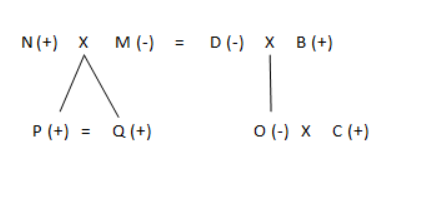Question
How is M related to
N? Study the following information carefully and answer the questions given below. O is the only daughter of B, who is the brother-in-law of M. P is the brother of Q. N is the father of Q but is neither the spouse of O nor B, who doesn’t have any siblings. C is the son-in-law of D, who is the maternal aunt of Q. The number of males in the family is more than the number of females in the family. Both the parents are alive in the family.Solution

If S is related to Social science and V is related to English in a certain way. Then, Q is related to which of the following?
Who among the following lives on top most floor?
What is the direction of A’s flat with respect to D’s flat?
Which of the following pairs represent 4th and 9th floor?
Which of the following does not belong to the group?
Sonu likes which of the schools?
Four of the following five are alike in a certain way and hence they form a group. Which one of the following does not belong to that group?
...How many persons visits after the one who visits Afghanistan?
How many boxes are kept between the vacant shelf and Box F?
How many persons sit between Sonu and Sunny?
Relevant for Exams:


